When it comes to apple-themed activities, the possibilities are endless! Apples are not only a delicious fruit but also a fantastic teaching tool for young children.
From sensory experiences to science experiments, these apple activities will keep preschoolers entertained while developing essential skills.
Now, we will explore Amazing Apple Activity for Preschoolers.
These activities can be adapted to suit different learning styles and can be incorporated into a preschool curriculum or used at home with your little ones.
Apple Tree Math:
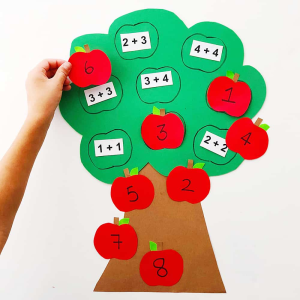
Create an apple tree on a large piece of paper or a bulletin board. Cut out apple shapes from colored construction paper and write numbers on them. Scatter the apple cutouts on a table or the floor and invite the children to pick up an apple and identify the number written on it. Then, they can place the apple on the corresponding branch of the apple tree. This activity helps preschoolers practice number recognition and counting skills while having fun.
Apple Volcano:

Turn an ordinary science experiment into an apple-themed adventure! Cut the top off an apple and scoop out some of the flesh to create a small cavity. Place the apple on a tray or in a bowl. In a separate container, mix baking soda and vinegar to create a foaming reaction. Pour the mixture into the apple cavity, and watch as it erupts like a volcano! This hands-on experiment introduces preschoolers to basic chemical reactions and the concept of cause and effect.
Related: 20 Fun Sensory Activities for 10 Month Old
Apple Puzzles:
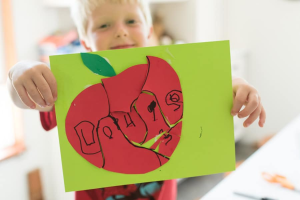
Create simple apple puzzles using pictures of apples. Cut each picture into two or more pieces, depending on the complexity you want to introduce. Mix up the pieces and let the children assemble the puzzles by matching the corresponding parts. This activity enhances problem-solving skills, hand-eye coordination, and visual perception.
Apple Taste Test:
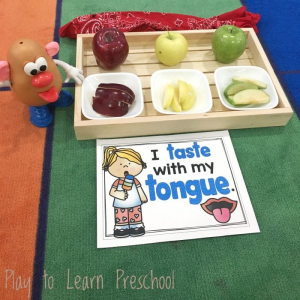
Extend the apple tasting activity by adding a twist. Provide various toppings like caramel, peanut butter, or yogurt, and invite children to dip apple slices into the different toppings. Encourage them to describe the taste and texture of each combination. This sensory exploration not only exposes children to new flavors but also encourages descriptive language and communication skills.
Related: 20 Exciting and Easy Bubble Painting for Preschoolers
Apple Seed Counting:
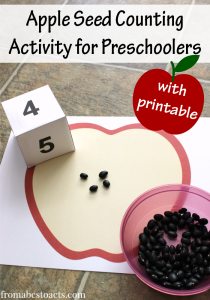
Create a hands-on math activity with apple seeds. Give each child a small cup filled with apple seeds and provide a numbered mat or template. Instruct the children to count out the corresponding number of seeds and place them on the matching numeral on the mat. This activity reinforces number recognition, counting, and one-to-one correspondence.
Apple Tree Craft:
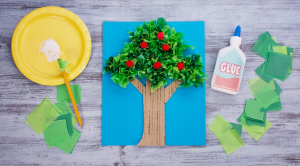
Provide each child with a small paper plate and green construction paper. Instruct them to cut out a tree trunk and branches from the construction paper and glue it onto the plate. Then, have the children tear or cut small pieces of red, green, and yellow tissue paper to represent apples. They can then glue the tissue paper “apples” onto their apple trees. This craft activity encourages creativity, fine motor skills, and color recognition.
Apple Picking Relay:
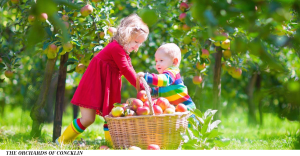
Set up a relay race in your play area or backyard, simulating an apple-picking experience. Divide the children into teams and give each team a small basket. Scatter plastic or paper apples around the area. On your signal, one child from each team runs to collect an apple and places it in their team’s basket. The next child in line goes when they return. The team with the most apples in their basket at the end of the race wins. This activity promotes gross motor skills, teamwork, and coordination.
Apple Sink or Float:
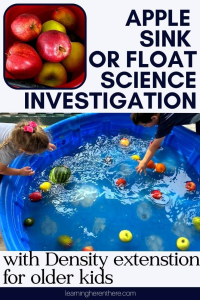
Fill a large container with water and gather a selection of apples, some that float and others that sink. Show the children each apple and have them predict whether it will sink or float before placing it in the water. Discuss their observations and record the results on a chart. This science activity introduces the concept of buoyancy and encourages critical thinking and prediction skills.
Apple Tree Playdough:
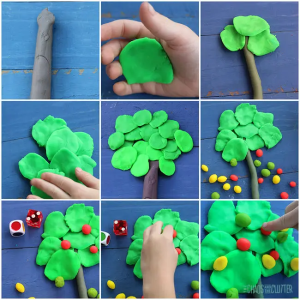
Set up a playdough station with green playdough and various accessories like craft sticks, small pom-poms, and foam apple shapes. Encourage the children to create their own apple trees by rolling and shaping the playdough as the tree trunk and branches. They can then decorate their trees by attaching the craft sticks as branches and sticking the pom-poms or foam apples onto them. This activity enhances fine motor skills, creativity, and imaginative play.
Apple Patterning:
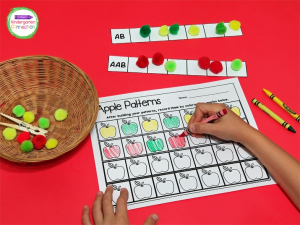
Create a patterning activity using apple cutouts in different colors. Prepare a set of apple cutouts in a sequence of colors (e.g., red, green, red, green). Ask the children to continue the pattern by placing the corresponding colored apples in the sequence. This activity promotes pattern recognition, sequencing skills, and visual discrimination.
Apple Relay Race:

Set up a relay race with a twist. Divide the children into teams and provide each team with a large spoon and an apple. Mark a starting line and a finish line. The children must place the apple on the spoon and race to the finish line without dropping it. If they drop the apple, they must go back to the starting line and start again. This activity promotes gross motor skills, balance, and coordination.
Apple Tree Tracing:
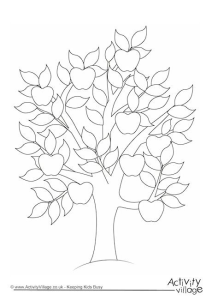
Provide each child with an apple tree outline on a piece of paper and some crayons or markers. Instruct them to trace the outline of the tree and then decorate it by coloring in the leaves, branches, and trunk. Encourage creativity and fine motor skills development through coloring and tracing.
Apple Science Experiment:
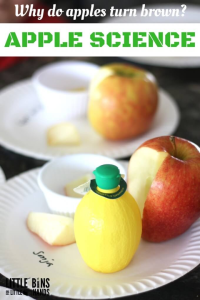
Conduct a simple experiment to explore oxidation. Cut an apple into two equal parts and place one half in a bowl without doing anything to it. Sprinkle lemon juice on the other half and place it in a separate bowl. Discuss the differences between the two halves and observe how the lemon juice prevents the apple from browning. This activity introduces basic science concepts and promotes observation and critical thinking skills.
Apple Tree Number Match:
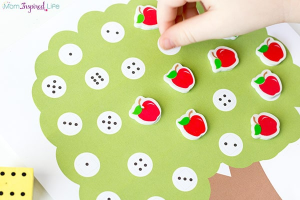
Create a set of apple cards with numbers written on them, and draw a corresponding number of apples on each card. Cut out tree shapes from construction paper and write numbers on them. Scatter the apple cards and tree shapes on a table or the floor. Have the children match the correct number of apples to each tree by counting and recognizing the numbers. This activity reinforces number recognition, counting skills, and one-to-one correspondence.
Apple Puzzles:
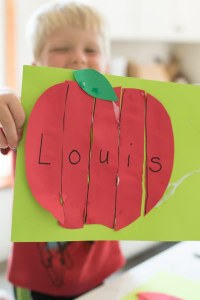
Print out or draw pictures of different apple varieties, then cut them into puzzle pieces. Mix up the pieces and let the children put the puzzles back together. This activity improves problem-solving skills, spatial awareness, and fine motor coordination.
Apple Stamping Art:
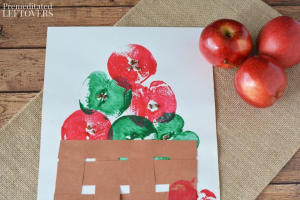
Cut an apple in half horizontally to create a stamp. Dip the cut side of the apple into washable paint and encourage the children to press it onto paper to create apple-shaped prints. They can experiment with different colors and create their own apple-inspired artwork. This activity promotes creativity, fine motor skills, and sensory exploration.
Apple Hunt:

Hide plastic or paper apples around the play area or classroom. Give each child a small basket or bag and have them search for the hidden apples. Encourage them to count the apples they find and discuss their colors. This activity develops gross motor skills, number recognition, and color awareness.
Apple Harvest Sensory Bin:
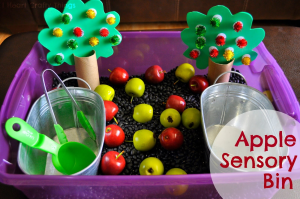
Fill a sensory bin with dried corn kernels or rice and add plastic apples of different colors and sizes. Include small containers and spoons for scooping and pouring. The children can explore the sensory materials, practice fine motor skills, and engage in imaginative play by “harvesting” the apples. This sensory activity stimulates tactile sensations, hand-eye coordination, and pretend play.
Apple Tree Measurement:
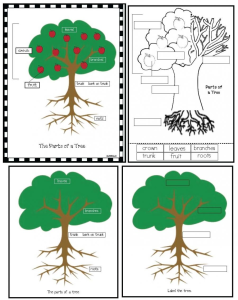
Create a large paper or fabric apple tree and label different parts, such as the trunk, branches, and leaves. Provide yarn or ribbon cut into different lengths and invite the children to measure each part of the tree using the yarn. They can compare the lengths and discuss which parts are longer or shorter. This activity introduces basic measurement concepts and develops fine motor skills.
Apple Collage:
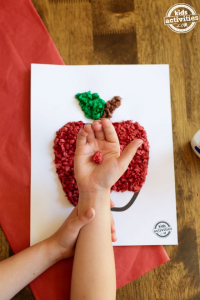
Provide the children with various art materials like torn paper, tissue paper, cotton balls, and stickers. Show them pictures of different apple varieties or apple-themed images for inspiration. Encourage them to create their own apple collages by gluing the materials onto paper or cardboard. This activity promotes creativity, fine motor skills, and artistic expression.


